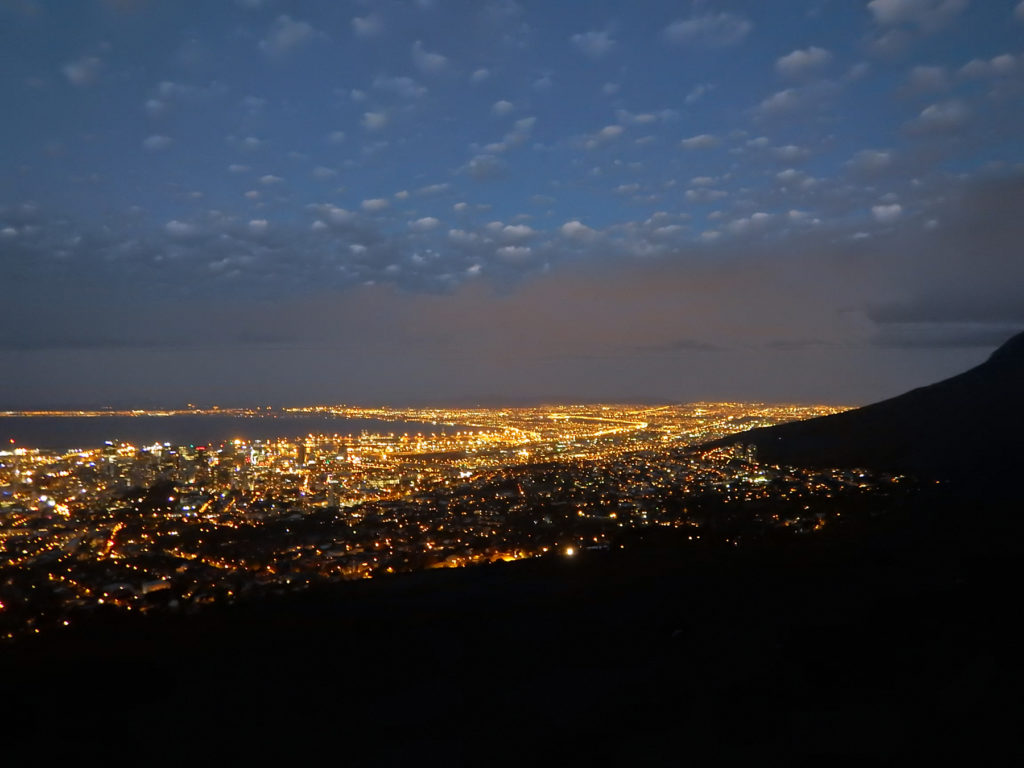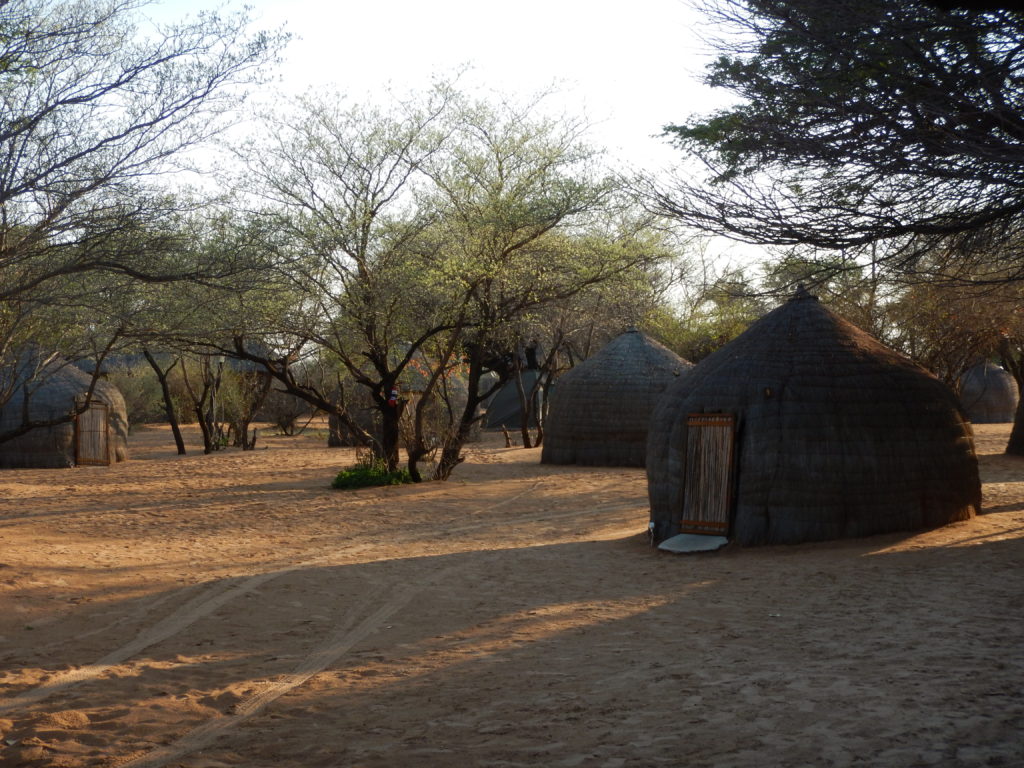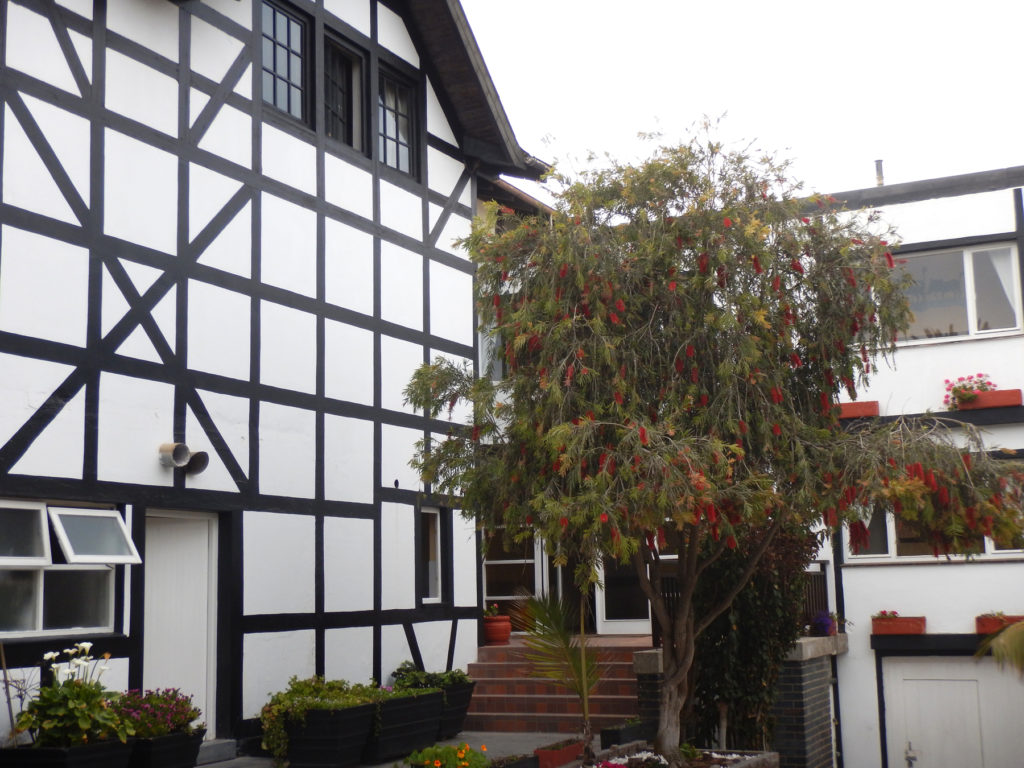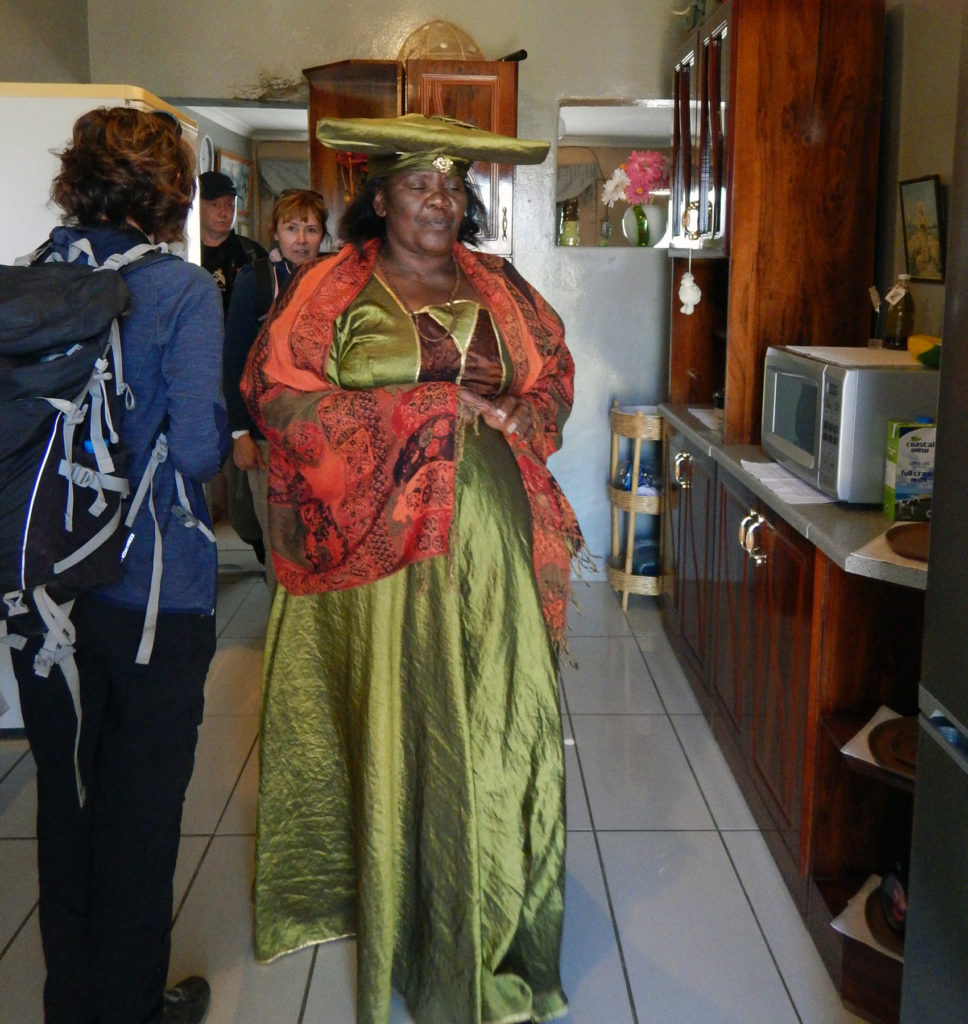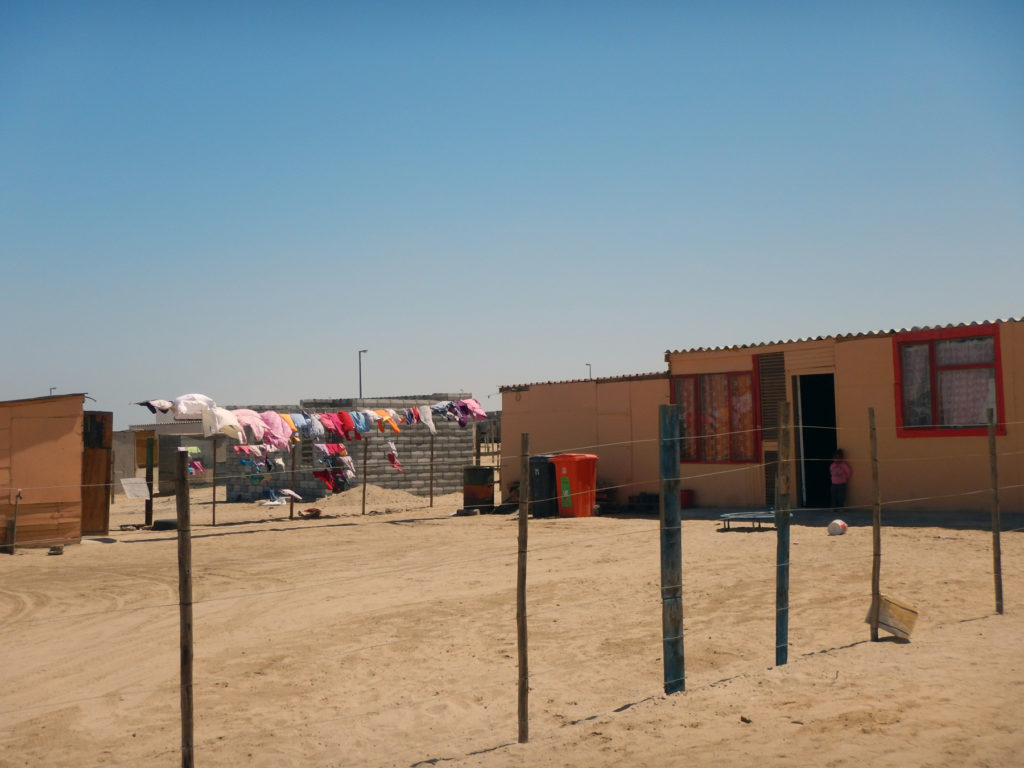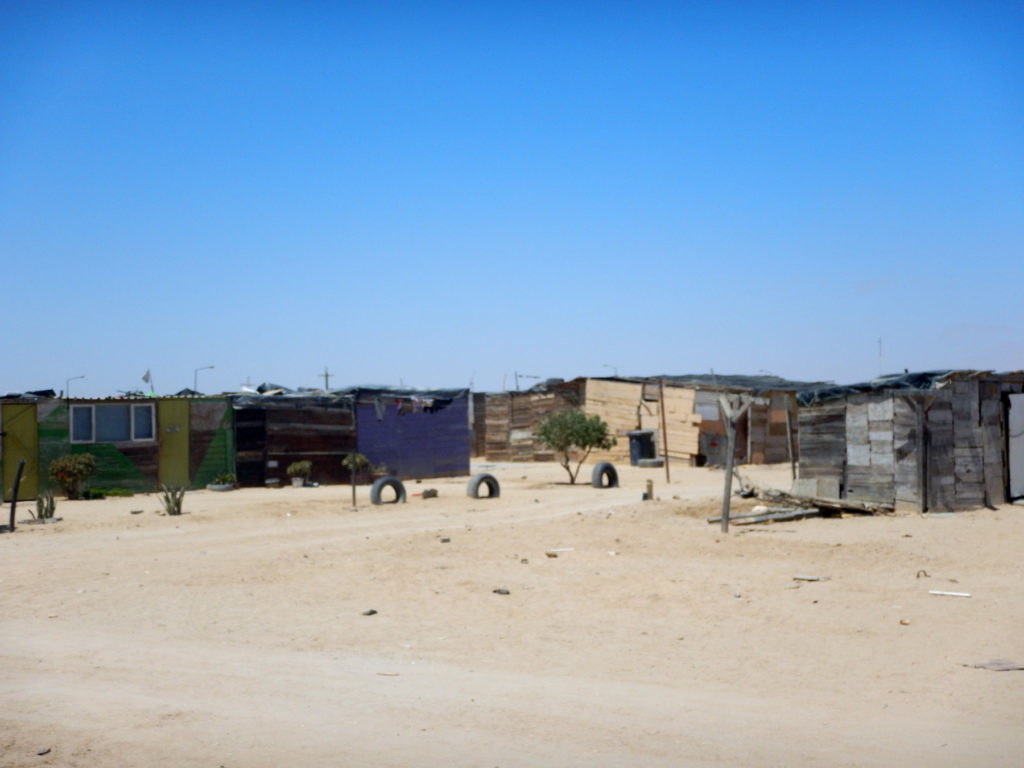Cape Town, South Africa, lies between the base of Table Mountain and the Atlantic Ocean. The mountaintop is flat – hence its name – and tourism has made it popular. Anyone who wants to see the top can do so via one of three different hiking trails or cable car. At the top visitors find educational trails, nature exhibits, a souvenir shop, and a couple of cafes, one with wifi.
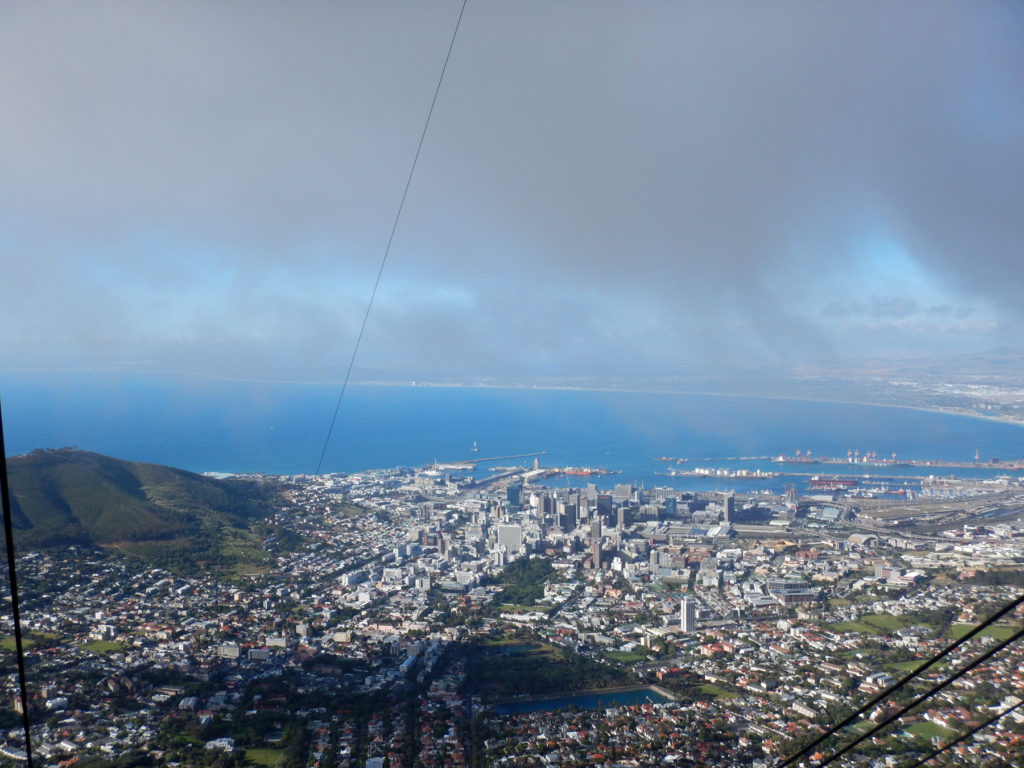
When the weather is good, the line for the cable car is often 2 hours long. Those who buy tickets online in advance can expect a shorter wait, but still, a wait. After seeing the length of the morning line, Robin and I decided to go later in the afternoon and watch the sunset on the mountain.
We should have suspected that something was up when our cab dropped us off and there was no line at all. But no – we thought we were incredibly lucky. Our cable car wasn’t even full as we spun gently 1 kilometer to the top.
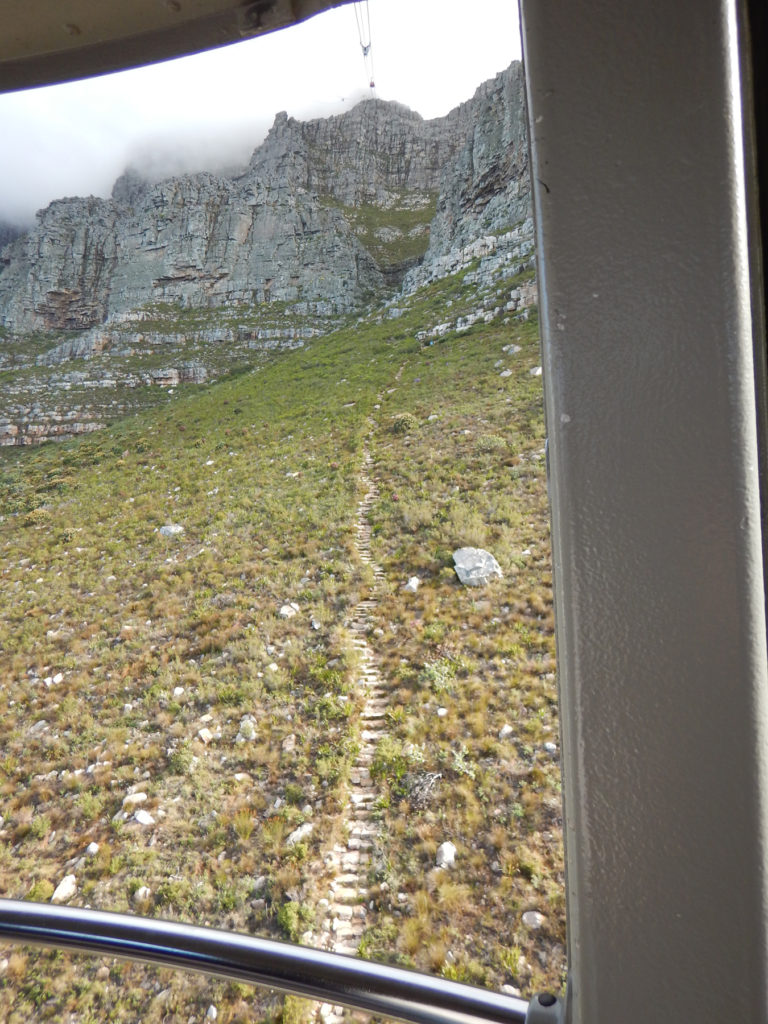
As we stepped off the cable car, shivering tourists stood in line, eager to go down. “Go back!” one shouted laughingly. The late afternoon breeze had brought a cloud and dense fog to the mountain. No wonder there had been no line!
Robin and I looked at each other and thought, “Well, we’re here. Let’s look around.” The swirling fog made it problematic, though. We couldn’t see more than a few feet in front of us. Wonderful displays were lost on us, since we couldn’t see, for example, the Twelve Apostles, a formation that a sign pointed toward.



We made an effort to see what there was to see, but eventually we gave up and headed for the warmth of the souvenir shop. People were buying all the hoodies and slipping them on as they stood in line to pay for them. The shop was crowded and the line to go back down was long, so we went for a cuppa. The cafe had windows, but the fog blocked the view, so we sipped our tea and were grateful to be indoors and sitting down.
Then the fog swirled away, and we could see all the way down the mountain to the waves in the bay. The sun would soon set behind a strip of cloud. It was so beautiful that we sat in silence.
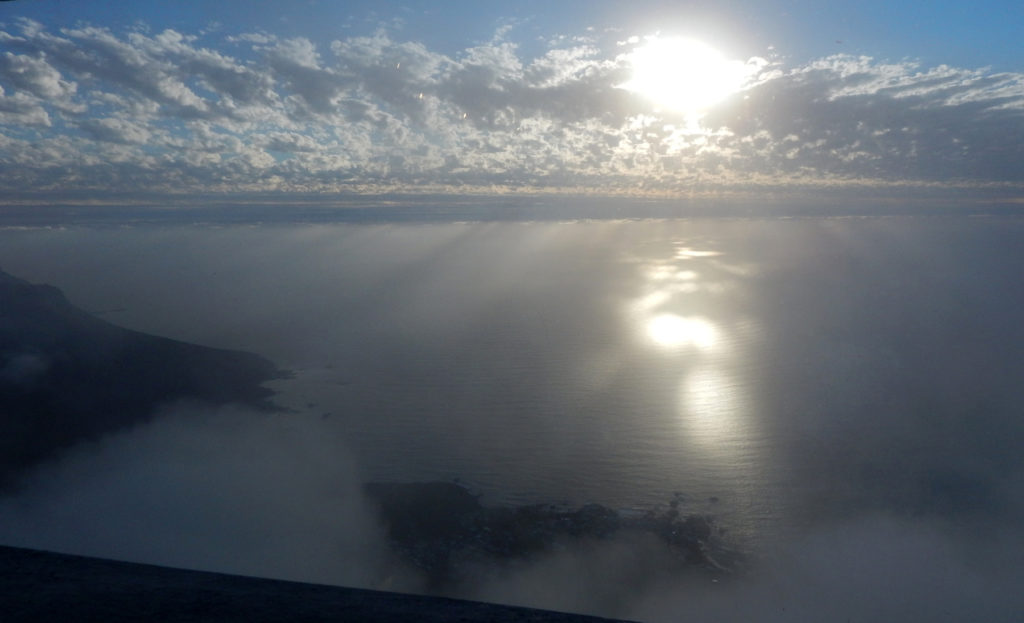
The fog rolled back in, and our window returned to milky gray. We clinked our paper tea cups in a toast. “That was really something!” “Yeah, it was.”
Our trip was nearly over. We had met wonderful people, watched amazing animals, eaten exotic food, and learned a little about life in Africa. We would go our separate ways the next day. It was enough to be present in this moment.
A couple of minutes later the fog rolled away again. The setting sun felt like a benediction.
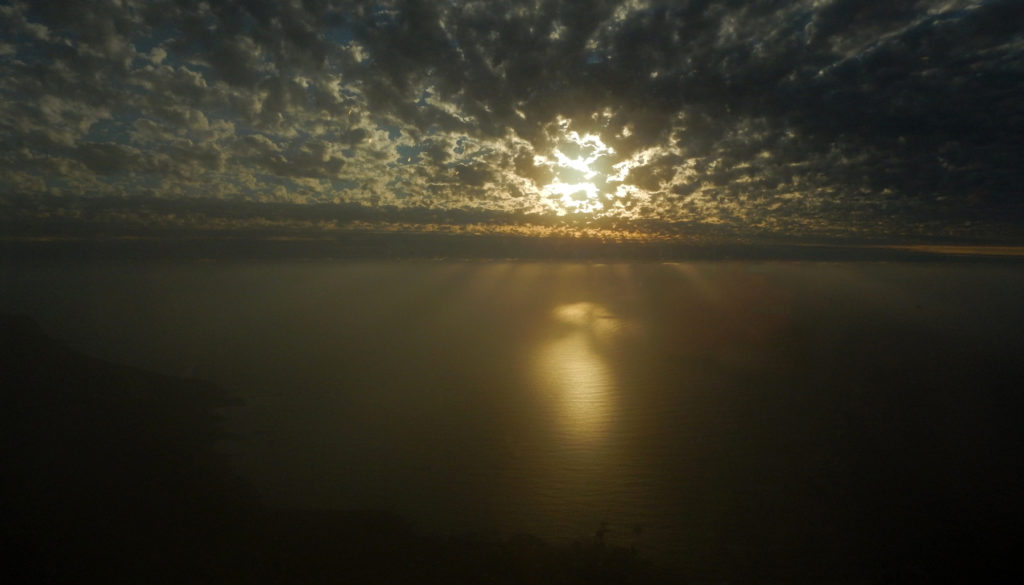
The fog rolled back in. It let us watch one last time, and then it was time to head back down.
